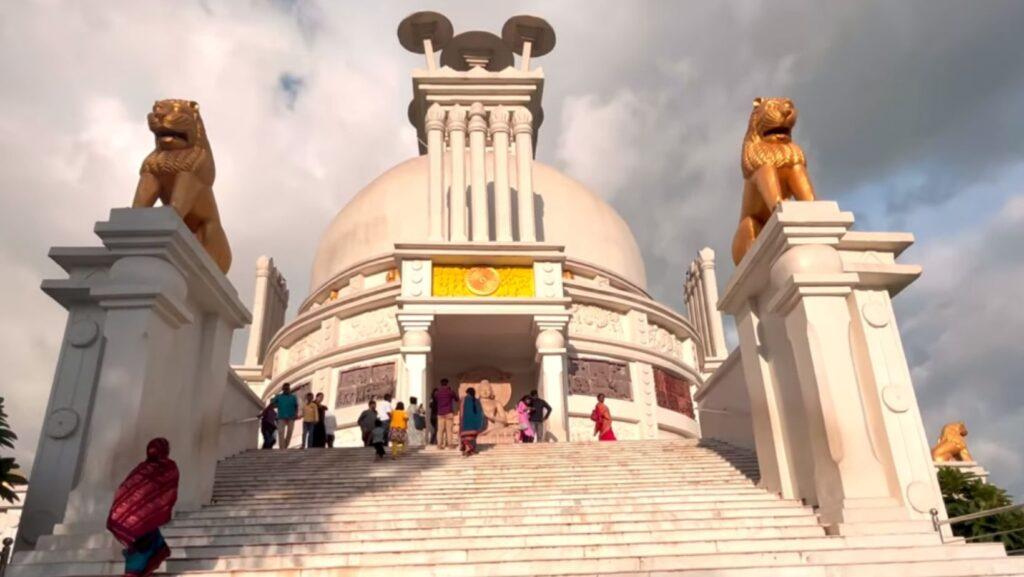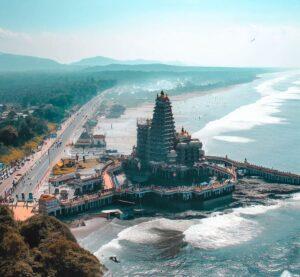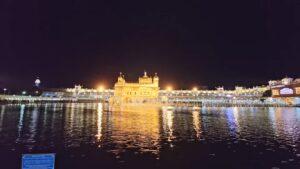About Dhauligiri
Dhauligiri is located on the banks of the river Daya, 8 km south of Bhubaneswar in Odisha, India. Dhauligiri is a place of historical, cultural, and religious significance, as it witnessed the great Kalinga War and the transformation of Emperor Ashoka to Buddhism. It is also home to the Shanti Stupa or Peace Pagoda, a monument that symbolizes peace and harmony.
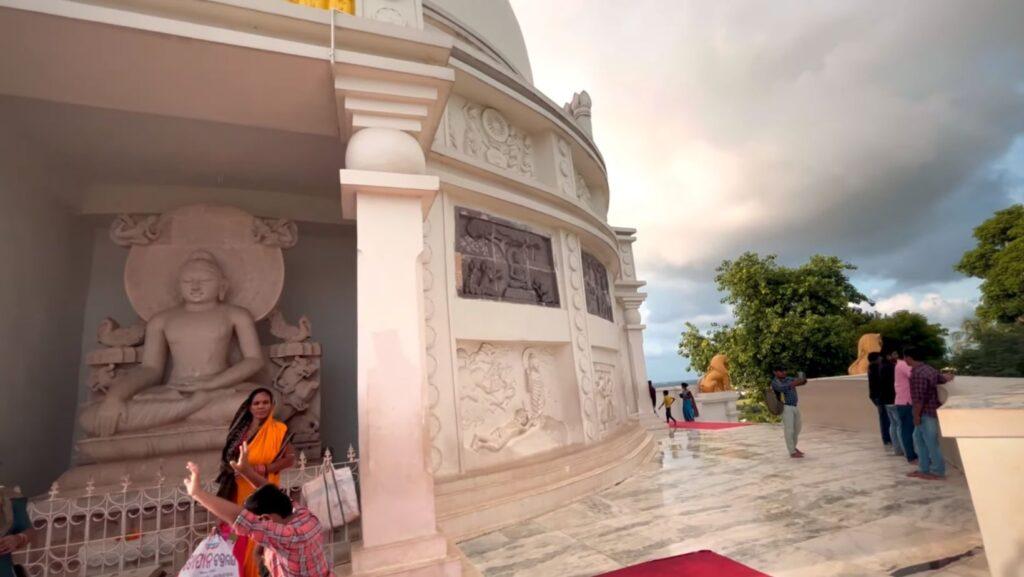
History of Dhauligiri
- Dhauligiri is presumed to be the area where the Kalinga War was fought in 261 BCE.
- The Kalinga War was one of the largest and bloodiest battles in ancient history, as Emperor Ashoka of the Mauryan Empire invaded the independent kingdom of Kalinga (modern Odisha) to expand his empire.
- The war resulted in a huge loss of life and destruction, as more than 200,000 soldiers and civilians were killed or wounded.
- The river Daya turned red with blood, and the sight of such carnage made Ashoka realize the futility and cruelty of war. He felt remorse and regret for his actions and decided to renounce violence and embrace Buddhism.
- He became a patron and propagator of Buddhism and spread its teachings throughout India and beyond. He also issued a series of edicts that proclaimed his moral and ethical principles, such as respect for all living beings, tolerance for different faiths, welfare for his subjects, and justice for all. These edicts were inscribed on rocks and pillars at various places in his empire, including Dhauligiri.
- At the foot of Dhauligiri Hill, one can find a major rock inscription of Ashoka that contains 11 out of his 14 edicts. The inscription is written in the Prakrit language using the Brahmi script. The front of the rock is shaped like an elephant head, symbolizing Buddha’s birth. The inscription also mentions that Ashoka built several stupas (mound-like structures containing relics) and chaityas (prayer halls) at Dhauligiri for the Buddhist monks and nuns. He also donated land and money for the maintenance of these structures.
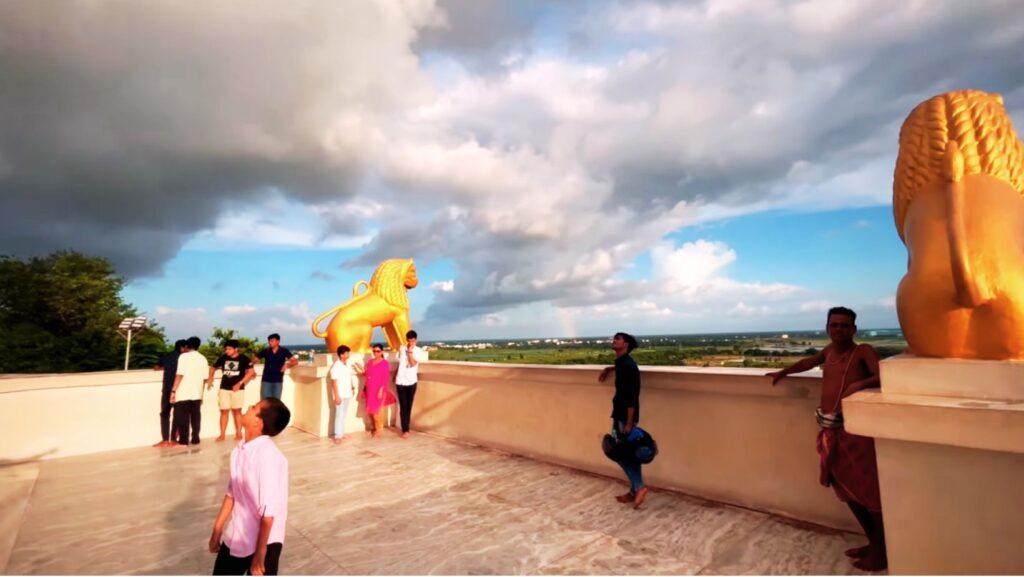
Architecture of Dhauligiri
The most prominent feature of Dhauligiri is the Shanti Stupa or Peace Pagoda, which stands on the top of the hill. The Shanti Stupa was built in 1972 by the Japan Buddha Sangha and the Kalinga Nippon Buddha Sangha as a symbol of peace and harmony. It is a white dome-shaped structure with four niches that contain statues of Buddha in different postures. The stupa also has stone panels that depict scenes from Buddha’s life and teachings. The stupa is surrounded by a garden that has various plants and flowers.
Timing of Dhauligiri
Dhauligiri is open for visitors from 6:00 AM to 6:00 PM every day except Mondays. There is no entry fee for visiting Dhauligiri or its temples.
One of the highlights of visiting Dhauligiri is the light and sound show that takes place in the evening every day except Mondays. The show narrates the history and significance of Dhauligiri using colorful lights and sound effects. The show timings are 6:00 PM and 6:45 PM, and the ticket price is Rs. 26 per person.
Another feature of visiting Dhauligiri is the Dhauli Festival which takes place every year in February. The festival showcases the cultural heritage of Odisha through various performances of music, dance, drama, art, and craft. The festival attracts thousands of tourists and locals who enjoy the festivities at Dhauligiri.
Bhubaneswar to Dhauligiri Distance
The distance between Bhubaneswar and Dhauligiri is approximately 8 kilometers (5 miles) in a straight line. The actual travel distance by road might be slightly longer, depending on the route taken.
What can be seen in Dhauli?
It’s known for “Dhauli Santi Stupa”, a peace pagoda monument that witnesses the great Kalinga War built by Japanese Bud followers of Buddhism to mark the conversion of Great King Ashoka to Buddhism here after the Battle of Kalinga.
Also Read:
3 Night 4 Days Puri Tour Package
1 Night 2 Days Puri Tour Package
Places to Visit Near Dhauligiri
If you want to explore more of the attractions near Dhauligiri, you can visit some of the following places that are within a few kilometers of the hill:
Nandankanan Zoological Park, Museum of Tribal Arts & Artifacts, Lingaraja Temple etc.
So what are you waiting for? Visit Mypuritour today and book your trip to Dhauligiri. You will not regret it. This is a once-in-a-lifetime opportunity to experience the history, culture, and nature of Odisha.
